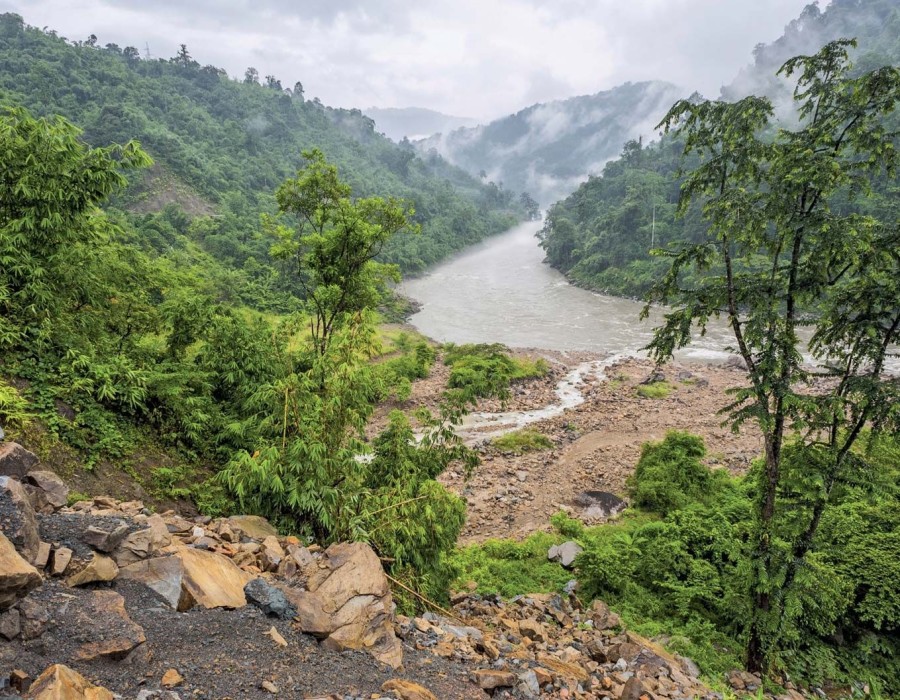North East India, with its lush landscapes, towering mountains, and vibrant cultures, is home to some of the most breathtaking rivers in the country. These rivers not only provide vital resources but also shape the cultural and ecological tapestry of the region. From the mighty Brahmaputra to the serene Teesta, each river contributes uniquely to the beauty and significance of North East India. In this article, we will explore the major rivers of this enchanting region, their importance, and their scenic allure.
The Brahmaputra River: The Lifeline of Assam
The Brahmaputra River is arguably the most prominent river in North East India. Originating from the Tibetan Plateau, it traverses through Assam before merging with the Ganges in Bangladesh. Known for its colossal size and ferocious power, the Brahmaputra is vital for agriculture, transportation, and the livelihoods of millions living along its banks.
The river’s importance is underscored by its role in sustaining Assam’s rich biodiversity. The river basin supports a variety of ecosystems, including the famous Kaziranga National Park, home to the endangered one-horned rhinoceros. The Brahmaputra also influences the region's climate, bringing much-needed rainfall and contributing to the fertile soil that supports extensive agriculture.
The Teesta River: A Journey Through Sikkim
The Teesta River, originating from the glaciers of Sikkim, is another significant river in North East India. This river flows through the picturesque landscapes of Sikkim and West Bengal before joining the Brahmaputra. The Teesta is crucial for the region’s water supply and agriculture, providing irrigation to the fertile plains of West Bengal.
A Sikkim tour is incomplete without experiencing the beauty of the Teesta. The river’s crystal-clear waters and surrounding verdant hills create a mesmerizing landscape. The Teesta River is also popular among adventure enthusiasts for white-water rafting, offering a thrilling experience amidst stunning natural scenery. The river’s banks are adorned with charming small towns and villages, each with its unique cultural heritage, making it a focal point for travelers exploring Sikkim.
The Dzongu and Rangeet Rivers: Gems of Sikkim
Within Sikkim, the Dzongu and Rangeet Rivers also hold substantial significance. The Dzongu River, flowing through the remote Dzongu valley, is considered sacred by the local Lepcha community. This river is integral to the cultural identity of the Lepchas, who revere it as a divine gift. The pristine environment around the Dzongu River is a haven for nature lovers and offers some of the most tranquil trekking routes in Sikkim.
The Rangeet River, a major tributary of the Teesta, is another important waterway in Sikkim. Its rapid flow and surrounding scenery make it a popular spot for adventure activities like rafting and fishing. The river’s valley is dotted with picturesque hamlets and lush tea gardens, adding to the region’s charm.
The Barak River: A Lesser-Known Treasure
Flowing through the state of Manipur and Assam, the Barak River is a lesser-known but equally important river in North East India. Originating in the Manipur hills, the Barak River meanders through the lush landscapes before merging with the Brahmaputra. The river plays a crucial role in the agricultural economy of the region, supporting paddy cultivation and other crops.
The Barak River is also renowned for its scenic beauty. Its journey through the verdant hills and plains offers travelers stunning vistas and a peaceful environment. The river is less frequented by tourists, making it an excellent destination for those seeking solitude and an authentic experience of North East India's natural beauty.
The Subansiri River: The Confluence of Nature and Culture
The Subansiri River, originating from Tibet and flowing through Arunachal Pradesh, is another major river in North East India. Known for its breathtaking gorges and rapids, the Subansiri is a key water source for the region and supports diverse ecosystems along its banks. The river is also culturally significant, with many indigenous communities depending on it for their livelihoods and traditions.
The Subansiri’s scenic beauty is striking, with its rugged terrain and lush surroundings. The river’s journey through Arunachal Pradesh showcases some of the most unspoiled landscapes in the region. For nature enthusiasts and adventure seekers, the Subansiri offers opportunities for exploration and immersion in the pristine wilderness.
The Importance of Conservation
The major rivers of North East India are not only vital for the region’s ecological balance but also for the socio-economic well-being of its people. These rivers provide water for drinking, irrigation, and industrial use. They also support a rich biodiversity that includes numerous endangered species.
However, the rivers face several challenges, including pollution, deforestation, and the impacts of climate change. Protecting these rivers is crucial for maintaining the region's environmental health and cultural heritage. Efforts to conserve these waterways, including sustainable management practices and community awareness, are essential to preserving their beauty and significance for future generations.
Conclusion
North East India's major rivers are more than just bodies of water; they are the lifelines of the region, shaping its landscapes, cultures, and economies. From the grand Brahmaputra to the serene Teesta and the sacred Dzongu, each river offers unique experiences and scenic beauty. Whether you are exploring Sikkim’s enchanting river valleys or delving into the cultural significance of the Subansiri, North East India's rivers provide a window into the region’s natural and cultural richness. As we cherish and protect these rivers, we ensure that their splendor and significance continue to inspire and sustain the region for generations to come.





Comments